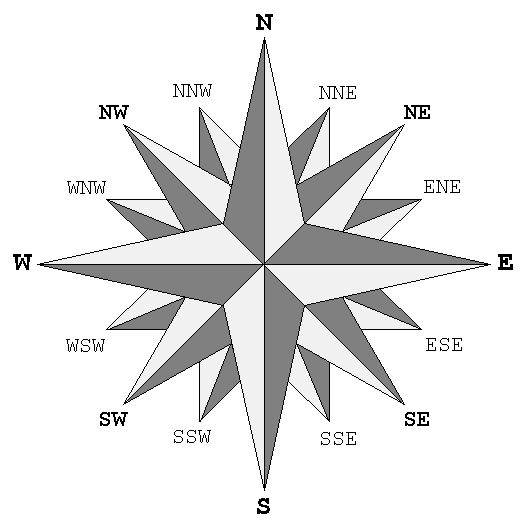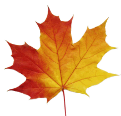
|

|

Plot Land |

Search Alberta Corporate Registry |

Search Edmonton Property |
 Android |

Links |
|
Cowichan Land Ruling |
Plot a Metes and Bounds Legal Land Description
Fast Start: Create a free account and use PLOT10, which has a 'Save' button and all the latest features.
Check Button
- Check runs a syntax check on your data, plots the land, and calculate area and closure.
- The starting point should meet up with the ending point (much less than an inch). This is called "Closure".
- The area (acreage) should be very close (within a 1000th) to what is on the legal land description.
- Data Entry Errors will be highlighted.
- Hover over the highlighted fields to see the error message.
- 'Check' is a Free
Calc Button
- Computes Latitudes and Longitudes for all points.
- Computes arc lengths and chord lengths for all curves.
- Has links to download the point coordinates in CSV, KML, GPX and JSON formats.
- Has links to draw your property on top of Road and Satellite Maps.
- 'Calc' is a Paid Service.
Save Button
- Saves your work.
- Adds additional lines to the bottom of the form.
- Requires an account.
- Create an account . . .
Dual Monitors
- The first time you click 'Check' or 'Calc', a new Tab will be created in your Web Browser
- Drag and drop that tab onto your second monitor
- Now when you click 'Check' or 'Calc' the data entry screen will stay up on the first monitor and the output will draw in the second monitor
Using Google Earth to Plot Multiple Projects
This is probably the easiest way to overlay multiple properties onto the same map.- First, install Google Earth on your Computer.
- Then create a Project and Enter in your Land Description
- Click 'Calc'. Then click on the Download KML link and save the KML file to your computer
- Open up your download folder and click on the KML file.
Because Google Earth is already installed, clicking the KML file will automatically start Google Earth and import your KML file.
Then Google Earth will zoom into your location.
When you shutdown Google Earth, it will even nag you to save the KML file import as part of the Google Earth Setup.
Internet Map Overlay Accuracy is ±30 Feet
Internet satellite images are not perfectly lined up with latitudes and longitudes. Generally, accuracy is within ±30 feet.
Visually, this is plus/minus the width of 2 lane road.
So what happens is that sometimes you are sure you have everything keyed in just right, but the whole overlay looks like it needs to be shifted 10 or 20 feet one way or another to line up with the satellite image.
One suggestion is to try the Bing and Leaflet overlays and also download the KML file into Google Earth.
One of the three maps may be better than the others.
Check Button
'Check' does not use up any credits.. It 'checks' your input for errors, draws out the land, calculates area and calculates closure.'Check' is used to check your progress as you enter in the data.
Calc Button
'Calc' consumes 1 credit.Calc does latitude and longitude calculations and displays them on-screen, as well provide links to download the coordinates of your finished project in CSV, GPX, KML and GEOJSON formats.
Calc also plots your project on top of Bing and MapBox Satellite Images and Roadmaps.
Credits
If you wish to setup an account, click Setting up an Account and follow the instructions.
If already have an account, click here.
Or, you can click "Login" on the top right hand corner of any webpage, sign in, and then click the "PLOT" button on the black menu bar.
Metes and Bounds Land Description
Overview:
- A Metes and Bounds Land Description starts at a well defined beginning point and traces the perimeter of a property using carefully measured distances and angles until it finally returns to the point of beginning.
- The end point must meet up with the start point. (Closure)
Example:
A tract of land in the Northwest quarter of the Northwest quarter of Section 30, Township 1 South, Range 66 West of the 6th Principal Meridian, County of Adams, State of Colorado described as follows:Commencing at the Northwest corner of said Section 30;
Thence South 20°30' East, a distance of 140.60 feet to the Point of Beginning;
Thence North 88°55' East, a distance of 200.00 feet;
Thence South, a distance of 125.00 feet;
Thence South 88°55' West, a distance of 200.00 feet;
Thence North, a distance of 125.00 feet to the Point of Beginning;
Containing 0.57 acres, more or less.
Bearings are based on the north line of the Northwest quarter of Section 30 to bear North 89°42' East with all bearings contained herein relative thereto.
Elements of a Land Description
- PREAMBLE
- The preamble provides a general description of the land to be described including the county, state and other general information to orient the reader.
- The preamble gets the reader to the proper general location.
- POINT OF COMMENCEMENT
- This is the reference point.
- A Point of Commencement is used to unambigously reference the parcel to a well-established point (ie: a government survey corner).
- A Point of Commencement is used when the reference point is not on the perimeter of the parcel.
- The Point of Commencement is either inside the land parcel or on another land parcel some distance away.
- There might not be a Point of Commencement.
- POINT OF BEGINNING (POB)
- The Point of the Beginning is "pen down", the first point where the drawing of the perimeter begins.
- If there is no Point of Commencement, the Point of Beginning is also the reference point.
- BODY
- The Body contains a sequence of Calls.
- These Calls draw the perimeter around the land parcel and end up back to the Point of Beginning.
- Calls recite Courses and Distances.
- Calls can be a straight line, a curve, or a line parallel line to another line.
- Calls can be references to adjoining boundaries, natural or artificial monuments, roads or rivers.
- Courses are the direction of a line.
- Courses are usually referenced to true north, but sometimes are referenced to magnetic north or a Basis of Bearing
- Distance is the length in a well-known unit, such as feet, meters or chains.
- AREA
- An Area Call sets forth the approximate acreage in the parcel.
- The acreage in the Area Call should be very close to the calculated area as defined by the sequence of calls in the Body.
- BASIS OF BEARING
- A Basis of Bearing is used instead of true north or magnetic north as the reference for the Courses.
- A Basis of Bearing is rare, most legal descriptions do not have one.
- If a land description has a Basis of Bearing, it will be explicity stated. Otherwise leave the Basis of Bearing fields blank.
- In some US states, a Land Description must always state it's Basis of Bearing, even if it is True North.
- If there is no Basis of Bearing, this application will use True North
Operating Instructions |
|
Field |
Description |
| Project Name |
A short description of the land parcel
The Formal Description of the Land Parcel (It makes your printed out documents look better) |
| Line | Line Number
The "Line Number" is not part of a legal land description. It is used by this application to provide a reference to a specific line of the input form during error checking. The Line Number is also used to automatically label points on the drawing that do not have a explicit Point Name. |
| Latitude Longitude |
Starting Latitude & Longitude
This is the starting point used to calculate all the other Latitudes and Longitudes. Latitude and Longitude are entered in decimal degrees, with longitude being a negative number in the Western Hemisphere. Latitude and Longitude at the 5th decimal place is about a meter. (eg: 50.123456° N) The MGRS app can be used to convert a Degree, Minutes, Seconds into Decimal Degrees. Entering a Latitude and Longitude is recommended
This app will work OK without the starting latitude and longitude for distances under a few hundred feet.
Sectional (A Starting Point Referencing PLSS/DLS Corners)In the parts of the United States covered by the Public Land Survey System and the parts of Canadian provinces covered by the Dominion Land Survey, the starting Latitude and Longitude are often corners that can be obtained by using one of our sectional land description converters.
Government Databases (A Starting Point Referencing a Survey Monument)
Get Latitude and Longitude by Clicking on a MapPaid Map Free MapThe accuracy of internet satellite imagery is generally within plus/minus 30 feet (10 meters).
Get Latitude and Longitude with your Smart PhoneSmart Phones have a built in GPS chip that can directly receive satellite GPS signals.
Smart phone accuracy is typically claimed to be within 10 meters (30 feet), but we have received emails where real life results were much better. Some smartphones are more accurate and consistent than others. Some phones work better in the city than others. If you have the opportunity, test your phone accuracy against professional survey equipment or against Survey Monuments. Take several readings on the same spot and see how close the multiple readings are to each other. GPS signals are 'weak' signals. GPS signals bounce off big hills and tall buildings. This can result in a poor GPS readings or none at all. Generally: Wide open flat prairie GPS is more accurate and works faster than downtown Edmonton GPS. |
| Point Name (Optional) |
Name of this Point
The computer assumes that point names are short -- 1, 2, 3 or 4 letters -- if used at all. The computer will automatically assign point names if none are entered. Or you can enter a Point Name to overide the automatic point name. This is done to aid drawing clarity. This is also done when legal text need the exact reference to a specific point name.
|
| Begin (Required) |
Point of Beginning
Most of the time, click the POB button on the first line, the line with latitude and longitude. But, sometimes, the legal description for your property will not commence on your property. Sometimes it will commence far, far away, at a 3 foot long metal pin driven into the ground that the original surveyor used to layout the whole subdivision. In this scenario, your legal description will zig and zag from that metal pin, until it finally gets to the point that is the start of your property line, the POB. Click the POB Button on this line instead of the first line. -------------------- Dashed lines are used to draw from the Point of Commencement (POC) to the Point of Beginning (POB). Solid lines draw are used to draw the Property Line. |
CoursesCourses are the directions to move. This application accepts courses in in 2 formats 1) Cardinal & 2) Bearings |
|
| Cardinal Directions |
Cardinal Directions are simply stated as words. North, South, East West, North West, North East, South West, South East North North East East North East, East South East, South South East, South South West, West South West, West North West & North North West Degree, Minutes and Seconds are left blank. East/West is also left blank.
|
| Bearing |
[North|South], Degree, Minute, Second, [East|West]
The Compass is divided into 4 quadrants. Directions start at either North or South and proceed at an angle towards East or West. At least one of the degree, minute or second fields must be filled in.
|
Distance |
|
| Length | Length is a positive number with up to 8 decimal places.
In this application, the "Length" field is also used to hold the "Radius" when plotting curves. |
| Unit |
Unit Measures
Land Surveying Units of Measures. These well know units of length are accepted. Unit Meters ------------- --------------- Foot 0.3048 Yard 0.9144 Chain 20.1168 Link 0.201168 Rod 5.0292 Meter 1 Inch 0.0254 Furlong 201.168 Perch 5.0292 Pole 5.0292 Mile 1609.344 Kilometer 1000 League 5556 US Foot 0.30480061 ------------- --------------- US Survey Foot If unsure, select "Foot" rather than "US Foot" in the unit drop down. Since 1893, the legal definition of the foot in the United States has been based on the meter. But before that date, the definition of the foot was as adopted by Congress in 1866 was 1 US Foot = 1200/3937 meter exactly. In 1959, the relationship of the foot to the meter was officially changed to what it is today: 1 Foot = 0.3048 meter exactly. U.S. Survey Foot (NIST) Although the difference is small, across the distance of an entire state, it becomes significant.
|
Basis of Bearing |
|
| Bearing |
A Basis of Bearing is used instead of true north or magnetic north as the reference for the Courses.
If there is no Basis of Bearing, leave these fields blank and the plotter will use True North. |
Ellipsoid |
|
| Ellipsoid |
Size and Shape of the Earth
The Earth is not a perfectly round sphere, it is an ellipsoid. An ellipsoid Earth bulges out at the equator, like when a child sits on a beach ball. There are slightly different sets of numbers used to describe the ellipsoid shape of the earth. Some are newer and more accurate. Some work better on a specific part of the earth, like the area around Mount Everest. As a default, the plotter uses WGS84, which is the current "standard". If unsure, leave this field blank. |
Curves
Left, Right, Compound & Reverse Curves
Enter in the Central Angle in the Degree/Minute/Second fields.
Enter the Radius in the Length/Radius field.
The radius is the radius of the curve.
The central angle is the angle swept.
In a legal description of a curve there should also be a "length" or "distance" of a curve.
These lengths should be qualified as either "arc length" or the "chord length".
The arc lengths and chord lengths are not used to compute the curve, they are included as a "math" double check.
As an additional double check, many descriptions also include words like "Southwesterly" or "Northerly" to describe the general direction of a curve.
Line Call
"Thence North 45° East a distance of 20 chains;"

Right Curve
"Thence a curve to the right, having a radius of 12 chains, a central angle of 90°, an arc distance of 18.85 chains and a chord which bears East a distance of 16.97 Chains;"






Compound Curve
"Thence a compound curve, having a radius of 8 chains and a central angle of 90°;"A compound curve requires another curve before it.


Reverse Curve
"Thence a reverse curve, having a radius of 5 chains and a central angle of 90°;"A reverse curve is based on the preceding curve.


Sectional Land Descriptions
Sectional Land Descriptions are subdivided by a grid system.
These are found by using these fill-in-the-form programs
| Link | Area | Grid Name | Example | |
| PLSS | USA | Public Land Survey System |
S2 T35N R21W Chisago County, Minnesota Section 2, Township 35 North, Range 21 West, Fourth Principal Extended |
|
| DLS | Canada | Dominion Land Survey |
SW 24-12-20-W4 Southwest Quarter of Section 24, Township 12, Range 20, West of the 4th Meridian. |
|
| NTS | Canada | National Topographic System |
C-26-F/93-K-11 Series 93, Area K, Sheet 11, Block F, Unit 26, Quarter C |
|
| FPS | Canada | Federal Permit System |
Yellowknife 38 62-30 N 114-15 W Hay River F 72 61-00 N 115-30 W |
|
| UTM | Global | Universal Transverse Mercator | 12N 384323 5540791 | |
| MGRS | Global | Military Grid Reference System |
12U UA 84323 40791 12U UA 84 40 |
Useful Math for Metes and Bounds
COMPUTE CHORD DISTANCE FROM RADIUS AND CENTRAL ANGLE ------------------------------------------- chord = 2 * radius * sin(centralangle/2) chord = 2 * 12 * sin(90/2) chord = 16.97 COMPUTE ARC DISTANCE FROM RADIUS AND CENTRAL ANGLE --------------------------------------------------- arcdistance = centralangle/360 * radius * 2 * PI arcdistance = 90/360 * 12 * 3.1416 arcdistance = 18.85 More math in 'C'
Legal Land Description References
-
Interpretations of Real Property Descriptions
Florida Association of Cadastral Mappers
The Florida Department of Revenue
FACM Course 3 -
Reading and Understanding Legal Descriptions
David Lawson
Washington Underwriter
Fidelity National Title Group
Washington Land Title Association - October 2018 -
North Caroling Property Mappers Association
Advanced Mapping
Section 5-C
Curves -
Specifications for Description of Tracts of Land for Use in the Land Orders and Proclamations
U.S. GOVERNMENT PRINTING OFFICE
Stock Number 024-011-00117-4 -
Guidelines for Writing Legal Descriptions
State of California
-
The Zigs and Zags of Legal Descriptions
by Alan C. Morganfield, SR/WA, PLS
by Charles Carpenter, ESQ
-
Legal Descriptions
by R.W. "Russ" Forsberg, PLS
-
Land Description Principles
By: William C. Rohde, RLS 841
Wisconsin Land Surveyor
Retired
-
How to map property boundaries from a deed
http://www.waldeneffect.org
by Anna Hess and Mark Hamilton
-
Property Descriptions
The types of legal descriptions used for real property in the United States.
Surveying References
-
Basic Surveying - Theory and Practice
Oregon Department of Transportation
Geometronics Unit
-
Highway Surveying Manual
Washington State Department of Transportation
Environmental and Engineering Service Center
Design Office
M 22-97 January 2005
Chapter 11 : Geometrics -
Finding Survey Marks and Datasheets
National Geodetic Survey
-
National Geodetic Survey Data Explorer
National Oceanic and Atmospheric Service -
Search BLM GLO Records
U.S. Deptartment of the Interior
Bureau of Land Management
Choose "Surveys" to find Platt Image
-
Content Requirements for Survey Plans and Sketches
Government of Alberta
Public Land Dispostions
https://www.alberta.ca/survey-sketch-plans.aspx
-
Geodetic Datums: NAD 27, NAD 83 and WGS84
GISGeography
-
2021 Manual of Standard Practice
Alberta Land Surveyor's Association
https://www.alsa.ab.ca/
-
Alberta Survey's Act
Province of Alberta
Office Consolidation
Revised Statutes of Alberta 2000
Chapter S-26
Current as of November 16, 2022
-
NGA: Universal Grids and Grid Reference Systems
National Geospatial-Intelligence Agency (NGA)
2014-02-28








